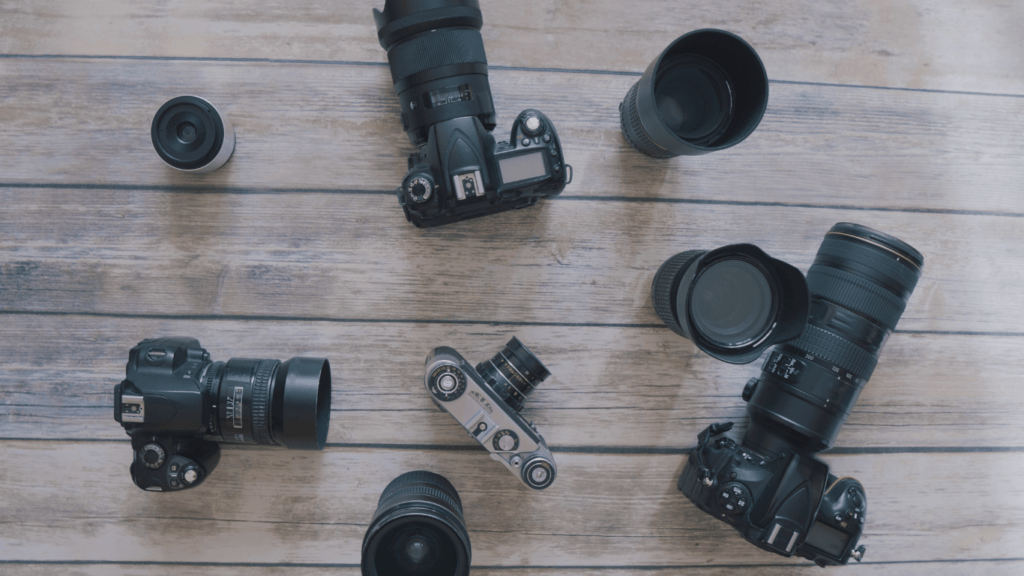As a professional photographer, I know the right gear can make all the difference. Whether it’s capturing breathtaking landscapes or nailing the perfect portrait, having the best camera and lens upgrades elevates both creativity and precision. But with so many options out there, choosing the right equipment can feel overwhelming.
Why Upgrading Your Camera Gear Matters
- Investing in advanced camera gear enhances image quality. Professional cameras with higher resolution sensors and better dynamic range capture finer details and more accurate colors, essential for creating standout images.
- Upgraded gear improves performance in varying conditions. Cameras with improved ISO sensitivity and lenses with wider apertures excel in low light, ensuring sharp, noise-free images even in challenging environments.
- Enhanced features streamline the workflow. Modern cameras with advanced autofocus systems, faster burst rates, and updated connectivity options like Wi-Fi or Bluetooth make capturing and transferring images more efficient during shoots.
- Durability and reliability increase with professional-grade equipment. High-end cameras and lenses are often made with robust materials like magnesium alloy and weather-sealing, ensuring they withstand demanding projects.
- Staying competitive in the industry relies on having the right gear. As clients expect impeccable results, upgraded equipment delivers the precision and quality that meet professional standards.
Top Camera Choices For Professionals
Selecting the right camera impacts the quality and versatility of professional work. Here are top-tier options tailored to meet various demands.
Full-Frame DSLRs
Full-frame DSLRs offer robust build quality and exceptional performance. I find models like:
- Canon 5D Mark IV
- Nikon D850
ideal for professionals due to their 30.4MP and 45.7MP resolution sensors respectively. These cameras excel in low-light conditions with ISO ranges up to 102,400 (expanded) and offer advanced autofocus systems with up to 153 focus points for precise subject tracking. Their longer battery lives make them reliable for extended shoots.
Mirrorless Cameras
Mirrorless cameras combine compact design with cutting-edge features. The Sony Alpha 1‘s 50.1MP sensor and 30 fps burst shooting make it a favorite for action photography. The Canon EOS R5 offers 45MP resolution and 8K video recording for hybrid shooters. With real-time eye autofocus and EVFs with over 5 million dots, these cameras provide unparalleled precision and viewing accuracy. Lighter bodies also enhance portability.
Medium Format Cameras
Medium format cameras deliver the highest image quality for genres like fashion or commercial photography. Models like the Fujifilm GFX 100 II‘s 102MP sensor and the Hasselblad X2D 100C‘s 16-bit color depth enable unmatched detail and tonal gradation. These cameras support tethered shooting for streamlined workflows in studio environments and are built for professionals demanding the pinnacle of image quality.
Essential Lens Upgrades To Elevate Your Photography

Selecting the right lenses ensures sharper, more dynamic images tailored to specific subjects and styles. Upgrading lenses maximizes creative potential and improves overall image quality.
Prime Lenses
Prime lenses deliver unmatched sharpness and clarity due to their fixed focal lengths. Options like the 50mm f/1.2 and 85mm f/1.4 excel in portraits, offering stunning bokeh and shallow depth of field. Wider primes, such as the 24mm f/1.4, work well for landscapes and astrophotography, capturing intricate details even in low light. Their lightweight design also enhances portability, making them convenient for on-the-go shoots.
Zoom Lenses
Zoom lenses combine versatility and convenience, covering a range of focal lengths without swapping lenses. The 24-70mm f/2.8 performs exceptionally for weddings, events, and studio work due to its sharpness and consistent aperture. For capturing distant subjects, like wildlife or sports, 70-200mm f/2.8 lenses provide a perfect balance of reach and speed. Advanced optical stabilization in modern zoom lenses also minimizes motion blur, ensuring crisp images in handheld scenarios.
Specialty Lenses
Specialty lenses cater to unique creative demands. Macro lenses, like the 100mm f/2.8, magnify intricate details, ideal for close-ups of products or nature. Tilt-shift lenses adjust focus planes, correcting distortion in architectural photography. Meanwhile, fisheye lenses, such as the 8mm, create dramatic effects with their ultra-wide fields of view, perfect for creative perspectives or capturing expansive interiors.
Key Features To Look For In Professional Gear
Professional photography gear needs to meet high standards to deliver exceptional results consistently. I focus on essential features that enhance performance and reliability in demanding conditions.
Build Quality And Durability
Professional gear requires robust construction to handle challenging environments. I prioritize cameras and lenses with weather-sealed bodies and durable materials like magnesium alloy. For instance, the Nikon Z9 and Canon EOS R3 feature rugged designs that resist dust, moisture, and extreme temperatures. Reinforced mounts and high-performance coatings ensure lenses maintain precision over time.
Autofocus Performance
Accurate autofocus ensures sharp results, especially in fast-paced situations. I look for advanced autofocus systems with real-time subject tracking and high frame rate compatibility. Mirrorless models like the Sony Alpha 1 and Canon EOS R5 offer up to 120 Hz focus processing and AI-based recognition, ideal for action or wildlife photography.
Low-Light Capabilities
Low-light performance determines image quality in dark or high-contrast scenarios. I select cameras with large sensors, wide dynamic range, and noise-reduction algorithms. Full-frame options like the Sony A7S III and Nikon Z8 excel with ISO sensitivities exceeding 102,400. Lenses with wide apertures, such as f/1.2 and f/1.4, further enhance low-light shooting.




